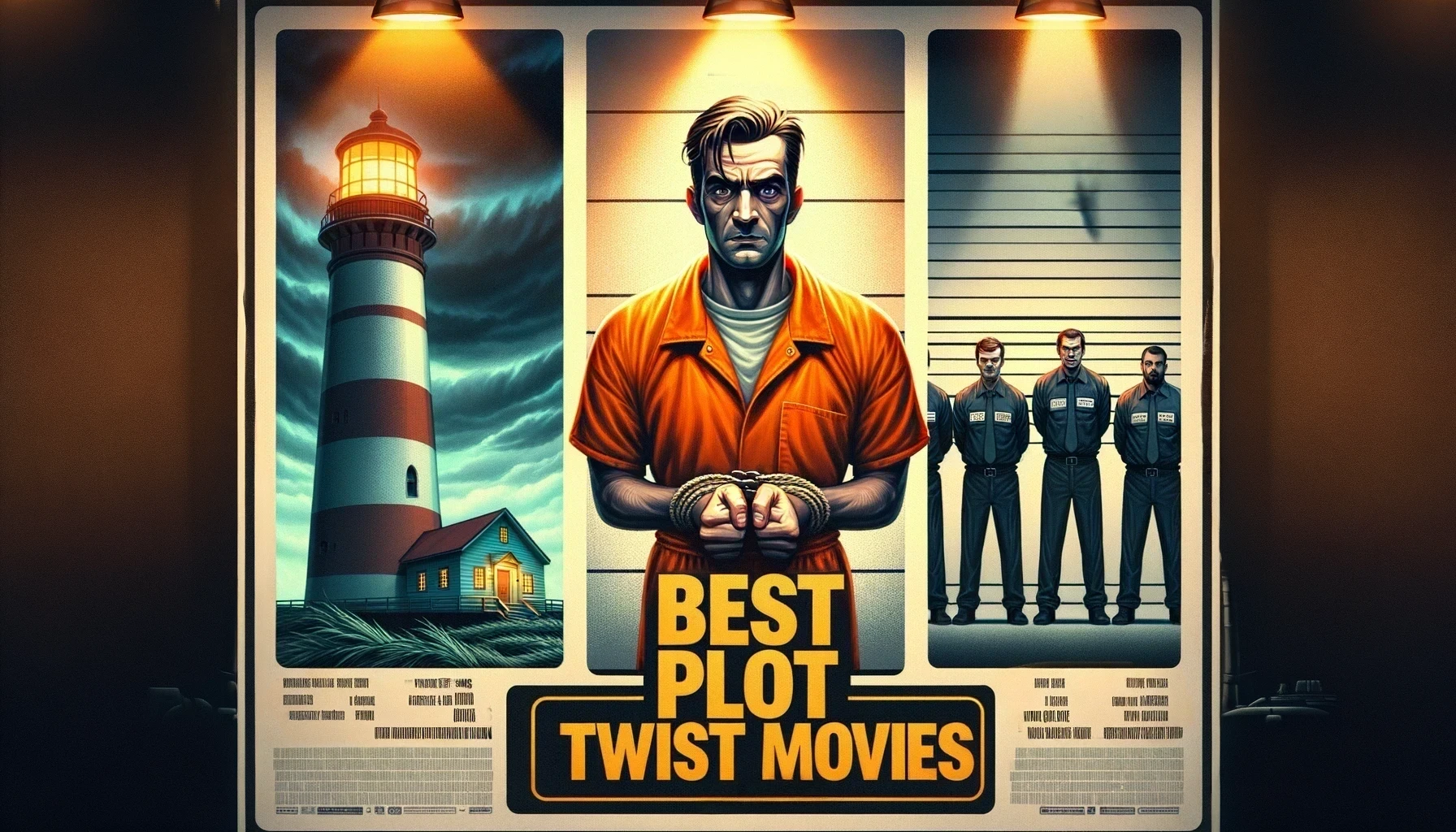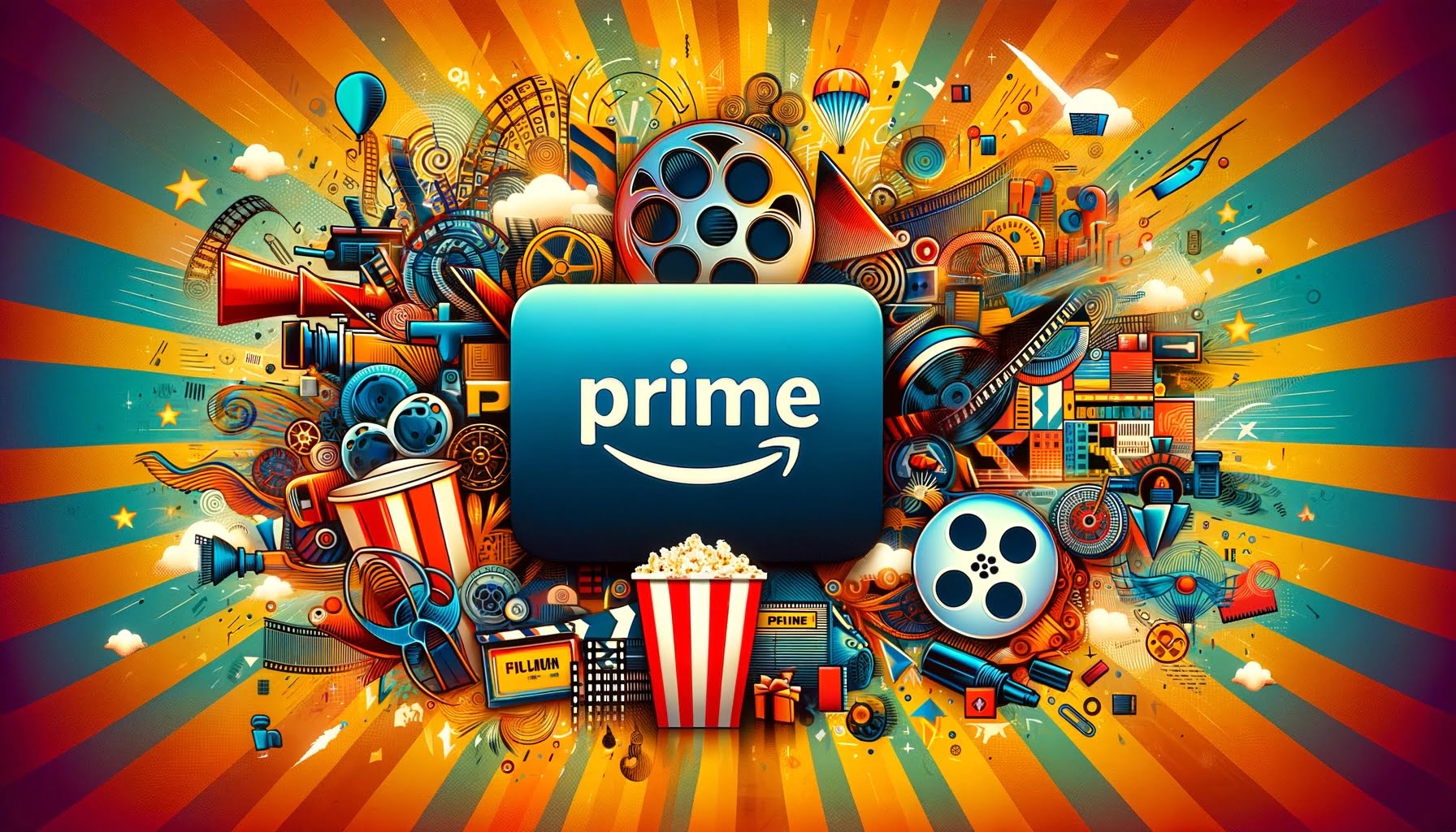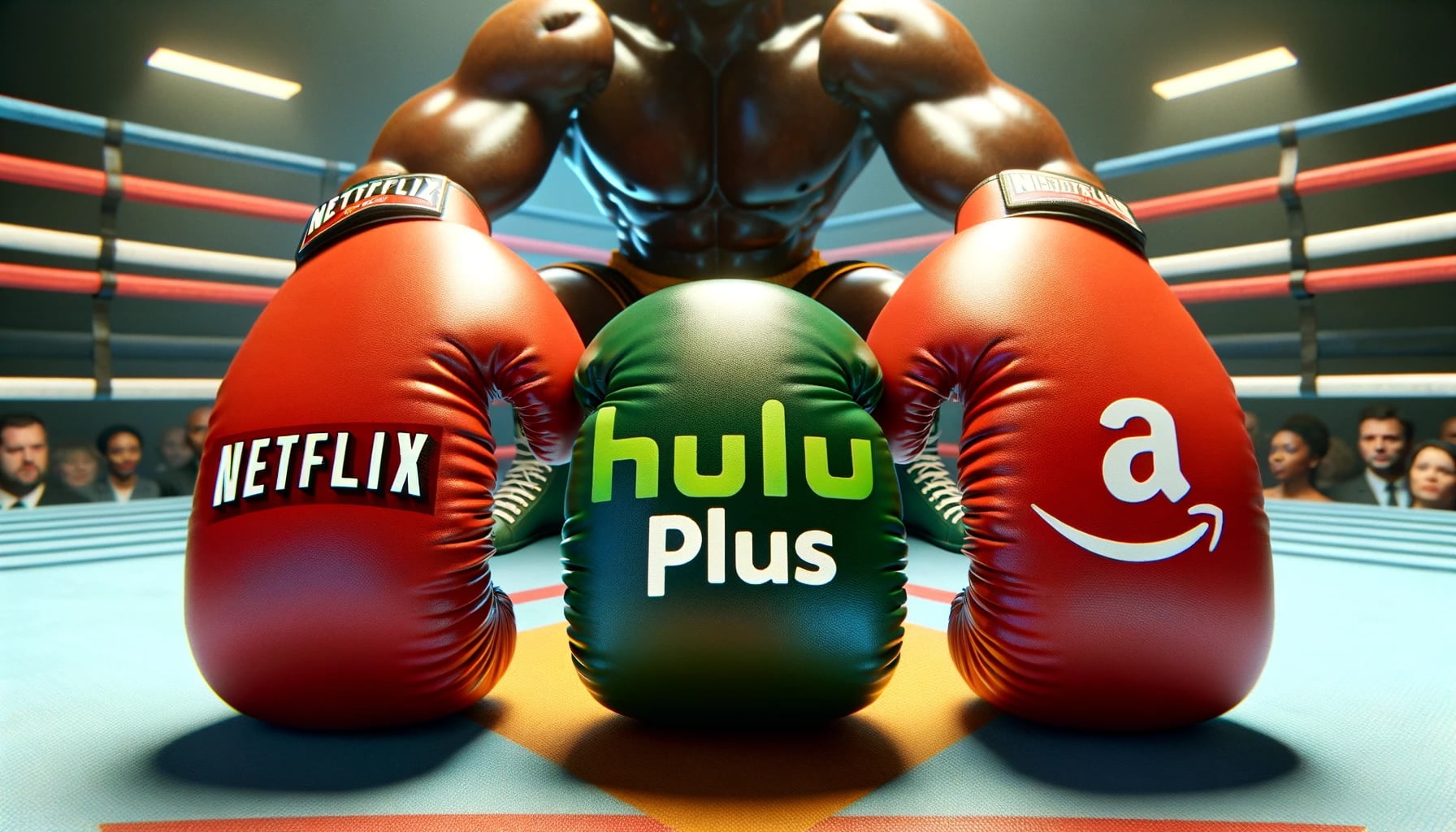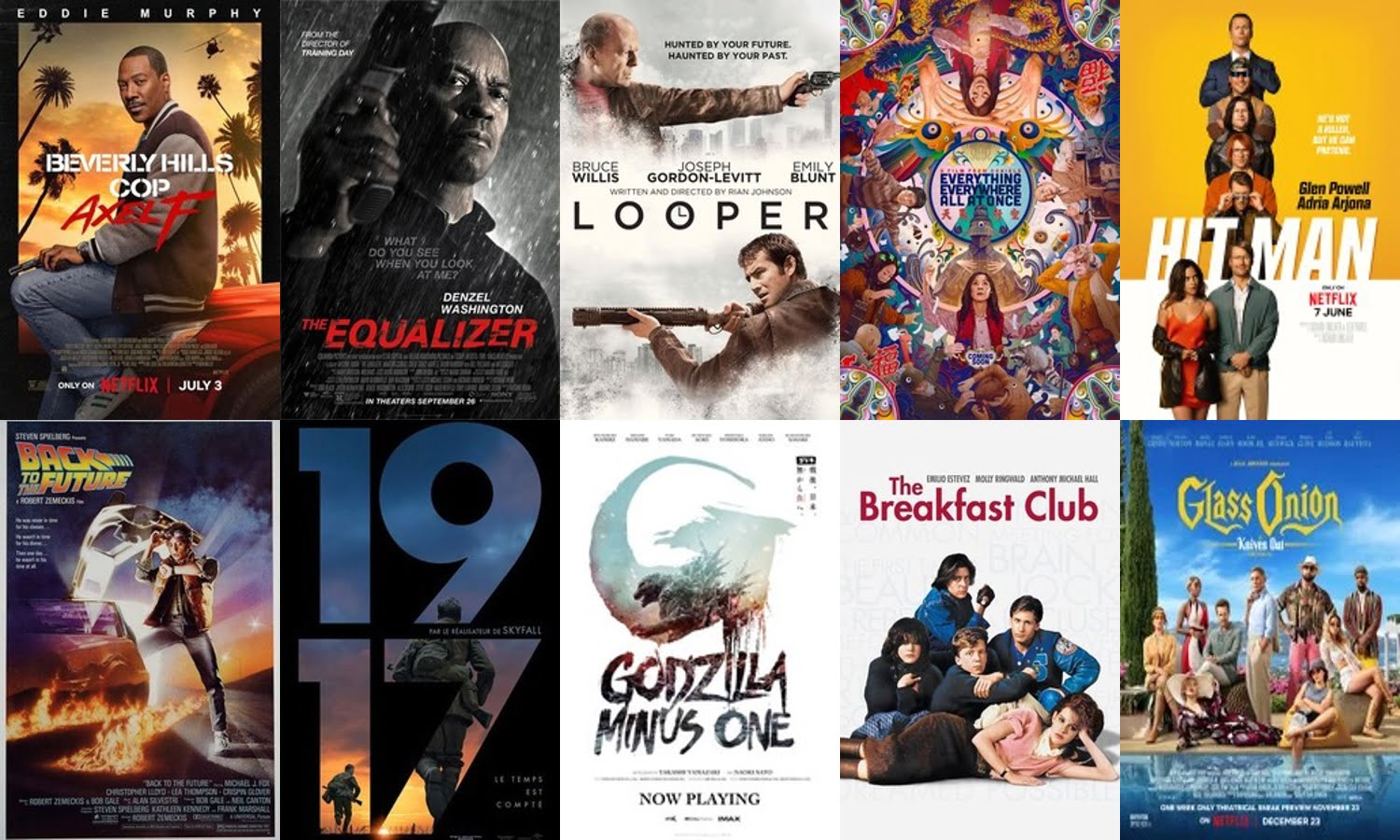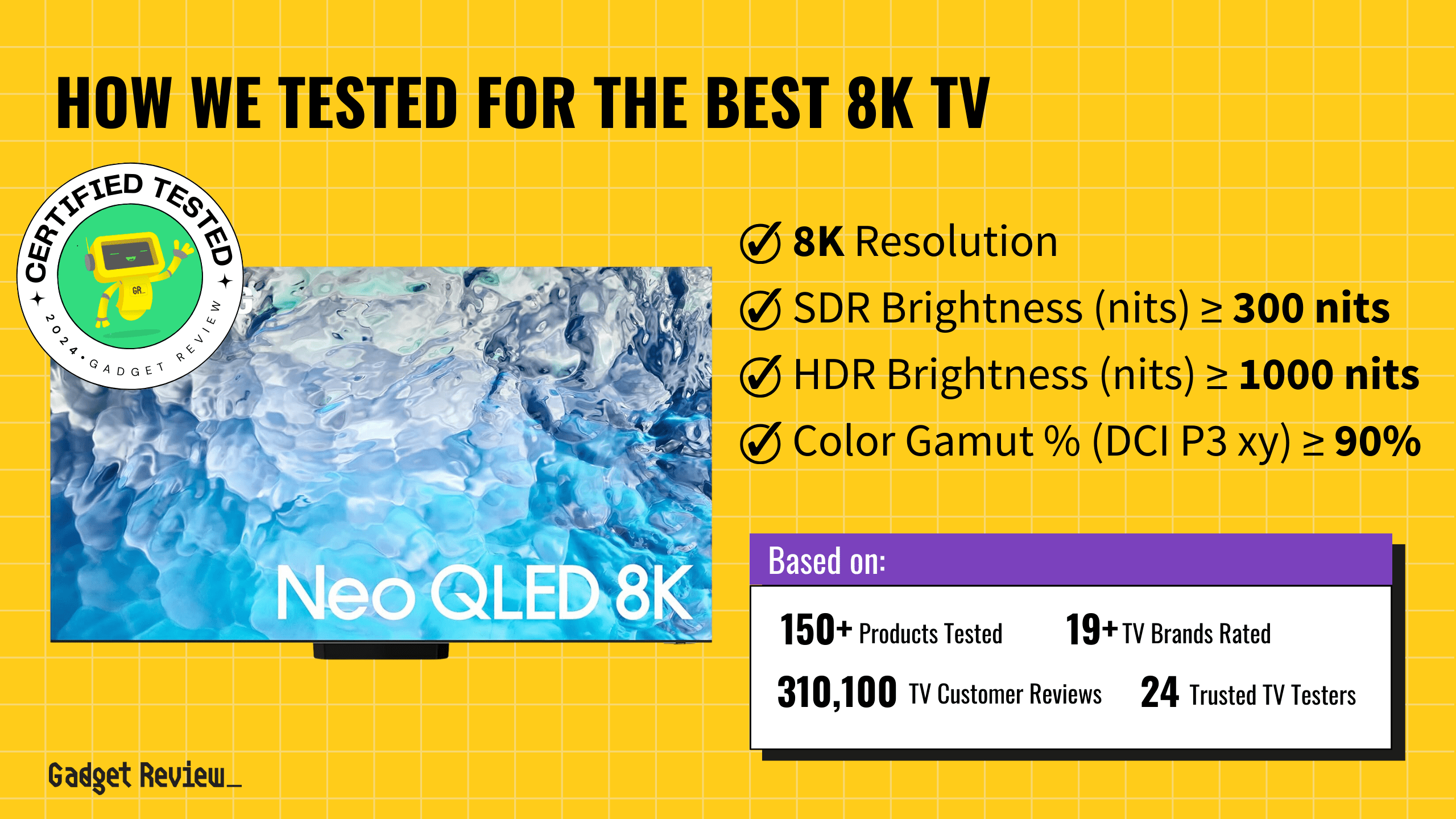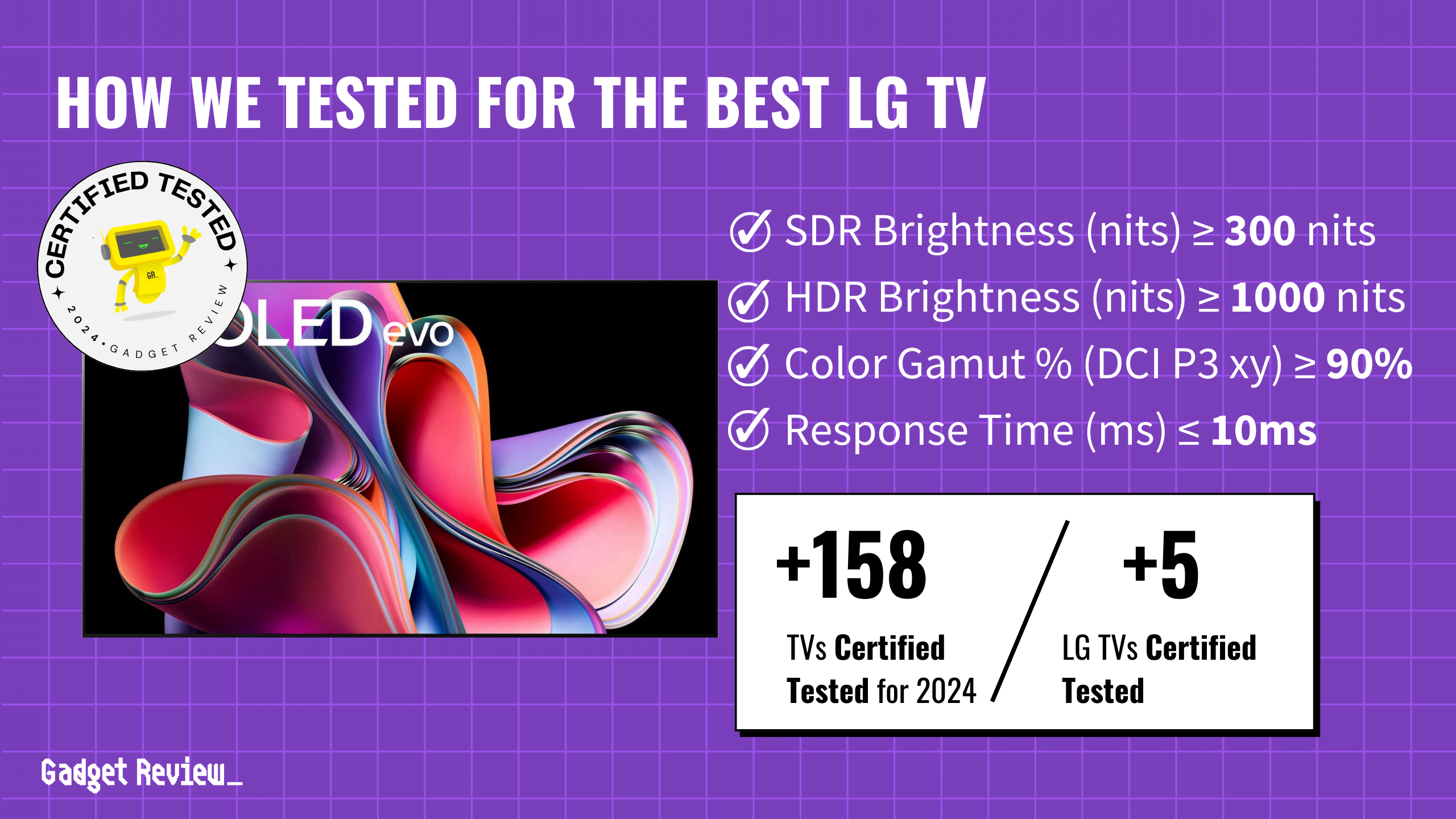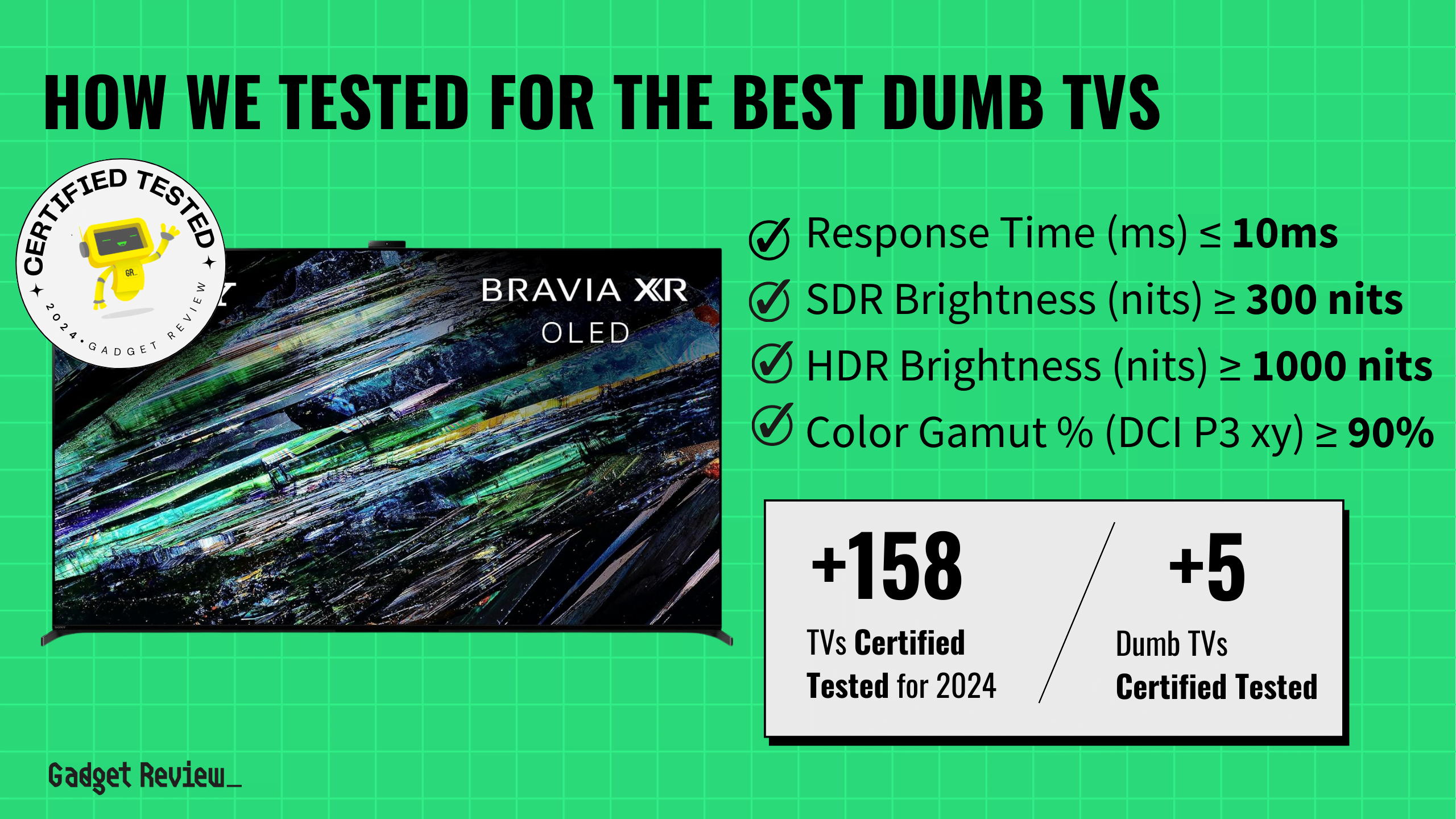If you’re eyeing the best Android TVs, you’re probably looking for a smooth blend of Google/Android OS smarts with top-notch performance. The real trick is cutting through the noise to find a TV that’s as user-friendly as it is reliable and high-quality. You want an Android TV that stands out in reviews for its performance, especially ones with 4K resolution, HDR support, and plenty of apps.
These specs make sure you’re getting a top TV that not only makes the most of Android’s cool features but also delivers on picture quality and ease of use.
How Did We Rank the Best Android TVs?
To assess how high or low quality an Android TV actually is, one must evaluate specific testing criteria against reference industry standards. Using our thorough TV Testing Methodology, we determined there are 1 minimum specs and 6 criteria below (3 required, 3 nice to have) that ensure your content looks as good as the creator intended it.
Minimum Specifications
- Smart Platform = Google TV
Test Criteria
- SDR Brightness: At least 300 nits for a bright, clear picture in any light.
- HDR Brightness: 1000 nits and up, bringing out the detail in high dynamic range content.
- Color Accuracy: Minimum 90% DCI P3 color gamut, for vibrant colors.
“Nice To Haves”
- Contrast Ratio: At least 10,000:1, for deep blacks and bright whites.
- EOTF Accuracy: Delta less than or equal to 0.018, ensuring precise brightness and contrast.
- Fast Response Time: 10ms or lower, keeping the action smooth without blur.
We’ve redefined TV buying guides, setting us apart from any other site on the planet. Our unique approach combines in-house verification with a comprehensive dataset from over 200+ trusted sites, focusing on key testing metrics to rank the top-rated LED TVs. Testing data and specs include SDR brightness of at least 300 nits, HDR brightness of 1000 nits and above, and color accuracy with a minimum of 90% DCI P3 color gamut. We aggregate and analyze this data from 158+ TVs, ensuring our recommendations meet your specific needs. For the best LED TV, this means delivering unparalleled resolution, exceptional brightness and color fidelity for an immersive viewing experience. Our commitment to unbiased reviews is powered by our ‘True Score’ system, targeting low quality and fake reviews. Commissions fund this mission. No bias. No BS.
Latest Updates
- 03/11/2024: Completely and thoroughly overhauled the guide to include the best and latest Android TVs.
- 11/29/2023: Republished the list to include TVs based on our True Score system.
Top Best Android TVs For 2025
Prices accurate at the time of publishing
To secure a place on our list, an Android TV must be a Google TV and offer exceptional all around performance. Anything less and it’s not on the list.

Best Overall

Runner Up

Best Value

Best Budget

Best Mid-Range

Premium Pick
Sony A95L OLED TV
Ideal for cinema enthusiasts and casual gamers, the A95L excels in color, contrast, and viewing angles, offering a premium experience at a premium price.
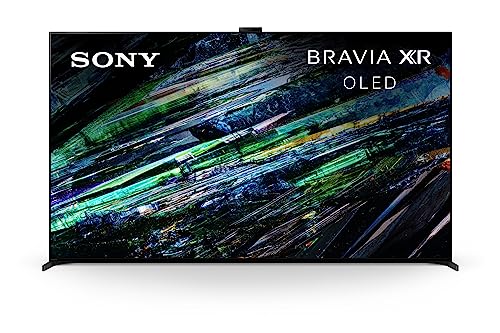
True Score
89926Experts
932kCustomers
Absolutely Fresh
 SAVE $1,599$3,577.95$1,979.00
SAVE $1,599$3,577.95$1,979.00Read More
Snapshot
Reasons to Buy
- Stellar picture quality in the dark
- High peak brightness
- Fast response time and low 4K input lag
- 120 Hz refresh rate
- Ultra-wide viewing angles
Reasons to Avoid
- Slightly high full HD input lag
- Slight purple haze
- No FreeSyc support
Specifications
Max Resolution 3840 x 2160 (4k) 
Backlight Type No Refresh Rate 120 Hz Display Type QD-OLED HDMI Inputs 4 
HDMI Type 2.0, HDMI 2.1 HDR Format Dolby Vision, HDR10, HLG 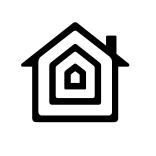
HomeKit Compatible Yes 
LED Panel Type OLED 
Number of Audio Channels n/a 
Panel Type OLED Screen size 55", 65", 77" 
Smart Platform Android TV, Google TV 
Speaker Output 60 watts 
Sync Technology G-Sync 
VRR Yes All Specs
Test Results
SDR Brightness (nits) 309.5 HDR Brightness (nits) 1,262 Color Gamut % (DCI P3 xy) 99.96 Response Time (ms) 9.6 Contrast Ratio (x:1) 0 EOTF (600 nit delta) 0.0022 Color Gamut % (DCI P3 uv) 99.97 Color Gamut % (Rec 2020 xy) 85.78 Color Gamut % (Rec 2020 uv) 90.25 Color Gamut % (sRGB) 0 Color Gamut % (Rec 709) 99.9763 Color Gamut % (BT.2020) 89 Color Gamut % (Adobe RGB) 0 Color Gamut % (BT.709) 0 Input Lag (ms) 16.4 Color Washout (Degrees) 70 Color Shift (Degrees) 70 Brightness Loss (Degrees) 70 Reflections (%) 1 Low-Freq Extension (Hz) 84.76 Freq Response StdDev @ 70db 2.45 Freq Response StdDev @ 80db 2.39 Weighted Total Harmonic Distortion @80db 0.139 Intermodulation Distortion @80db 0.7 EOTF (1000 nit delta) 0.0019 EOTF (4000 nit delta) 0.0023 All Tests
All Retailers
- $1,979.00$3,578Save $1,599
Availability
In StockFree Shipping
No - $1,999.99$3,500Save $1
Availability
Free Shipping
No - $2,898.00$3,498Save $600
Availability
Free Shipping
Availability
Free Shipping
Our Verdict
The Sony A95L OLED TV is among the best in our Android TV lineup thanks to its exceptional color accuracy, achieving 99.96% (DCI P3 xy) coverage for vibrant and lifelike visuals. With an SDR brightness of 309.5 nits and an HDR peak at 1262.0 nits, it ensures both standard and high dynamic range content look fantastic. Despite not being the brightest compared to some QLEDs, OLEDs offer wider viewing angles. Coupled with a low reflection rate of 1% also means you won’t be fighting glare, keeping your focus on the screen.
As an OLED, the A95L has near-perfect blacks and near-infinite contrast, enhancing everything from movies to gaming. Its EOTF delta of 0.0022 means HDR and home theater content is displayed with impressive realism, balancing dark shadows and bright highlights effortlessly.
For sports enthusiasts, the A95L does well with a swift response time of 9.6ms, meaning the action will stay blur-free. If you’re a gamer, the A95L is the worst option on the list; it’s not terrible, but the input lag hits 16.5 ms, which keeps it in the realm of casual gaming – hardcore competitive players should look elsewhere.
In short, the Sony A95L is a fantastic choice for anyone seeking a top-tier Android TV experience. It’s equipped to handle a wide range of content with ease, from streaming and gaming to everyday TV watching, delivering quality visuals and quick performance across the board. Just be wary of the hefty price tag.
Read Less

Best Overall

Runner Up

Best Value

Best Budget

Best Mid-Range

Premium Pick
TCL QM8/QM850G QLED TV
Best For Gaming
With unmatched brightness and solid response time, the TCL QM8 shines in well-lit rooms, offering a bright and responsive experience at a competitive price.
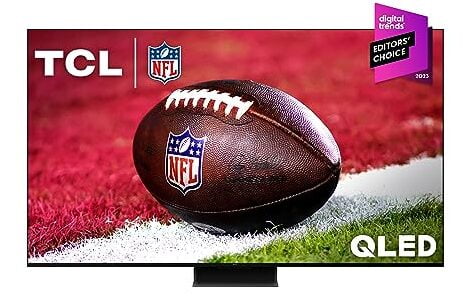
True Score
83847Experts
90488Customers
Absolutely Fresh
 SAVE $50$999.99$949.99
SAVE $50$999.99$949.99Read More
Snapshot
Reasons to Buy
- Outstanding picture quality
- Spectacular brightness and contrast ratio
- Rapid response time
- Super low input lag
Reasons to Avoid
- Disappointing viewing angles
Specifications
Max Resolution 3840 x 2160 (4k) 
Backlight Type Full-Array Refresh Rate 120 Hz 
Depth 11.7" Display Type QLED HDMI Inputs (Total) 2 
HDMI Type HDMI 2.1 HDR Format Dolby Vision, HDR10, HDR10+, HLG 
Height 34.1" High Dynamic Range (HDR) Yes 
Number of Audio Channels 3 
Panel Type LED Screen size 65", 75", 85", 98" 
Smart Platform Google TV 
Speaker Output 40 Watts 
Sync Technology AMD FreeSync Premium Pro 
VRR Yes 
Voice Assistant Google Assistant 
Weight 54.7 lbs 
Width 56.9" 
Works With Amazon Alexa, Apple HomeKit, Google Assistant All Specs
Test Results
SDR Brightness (nits) 2,076 HDR Brightness (nits) 2,005 Color Gamut % (DCI P3 xy) 94.59 Response Time (ms) 8.9 Contrast Ratio (x:1) 114,057 EOTF (600 nit delta) 0.037 Color Gamut % (DCI P3 uv) 97.31 Color Gamut % (Rec 2020 xy) 75.81 Color Gamut % (Rec 2020 uv) 80.57 Color Gamut % (sRGB) 0 Color Gamut % (Rec 709) 0 Color Gamut % (BT.2020) 0 Color Gamut % (Adobe RGB) 0 Color Gamut % (BT.709) 0 Input Lag (ms) 14.3 Color Washout (Degrees) 24 Color Shift (Degrees) 31 Brightness Loss (Degrees) 32 Reflections (%) 1.8 Low-Freq Extension (Hz) 89.8 Freq Response StdDev @ 70db 4.74 Freq Response StdDev @ 80db 4.67 Weighted Total Harmonic Distortion @80db 0.128 Intermodulation Distortion @80db 8.67 EOTF (1000 nit delta) 0.0238 EOTF (4000 nit delta) 0.0271 All Tests
All Retailers
- $949.99$1,000Save $50
Availability
In StockFree Shipping
No - $998.00$1,136Save $138
Availability
In StockFree Shipping
Yes - $1,299.00
Availability
In StockFree Shipping
Yes
Our Verdict
If your Android TV absolutely must be as bright as possible, the TCL QM8/QM850G QLED TV has you covered – all while showcasing impressive performance across other types of content at a decent price. With a color accuracy of 94.59% (DCI P3 xy), it provides vibrant and accurate colors that enhance the viewing experience. These colors are bolstered by an SDR brightness of 2076.0 nits and an HDR peak of 2005.0 nits, both of which are best-in-class values. This makes the QM8 the go-to option for anyone that needs their streaming TV to sit in extremely bright rooms.
When it comes to streaming movies, particularly HDR content, the EOTF of the QM8 is a bit of a letdown. At 0.0370, it comes in last overall, which means it does the worst job of accurately tracking gamma in scenes overall. If you’re looking to put the TV up in a brightly lit home theater, then the compromise in accuracy may be worth it given the TV’s brightness.
For gaming and fast-action content, the TCL QM8 is equipped with a response time of 8.9ms and an input lag of 14.3ms. While the input lag keeps the QM8 better suited to more casual and lightly competitive games, the response time is phenomenal, coming ahead of even the much more expensive Sony A95L. Whether you’re streaming action movies or watching sports, the response time ensures a smooth experience, reducing motion blur overall.
Reflection handling is decent, coming in at 1.8%, which is enough to keep the TV from washing out and becoming lost in glare from direct sunlight. While it’s tied for lowest reflections handling with the U7K, the leading TV (the A95L) has nearly one-quarter and one-half the SDR and HDR brightness, respectively. This makes the A95L worse at overcoming ambient brightness compared to the QM8.
TCL’s QM8 is all about its exceptional brightness and response time. It’s most at home when streaming sports content in rooms with a ton of direct light, but it can handle other types of content well enough, especially given its attractive price point. The U8K may be better for home theater content, but it can’t hold a candle to the raw output the QM8 has in the brightness department.
Read Less
DID YOU KNOW 87% OF TV REVIEWERS ARE UNTRUSTWORTHY?
Our research found 28 of 210 TV reviewers can be trusted, and shockingly 1 out of 3 on Google Page 1 were fake reviews showing no proof of test claims. See our Expose and Trust List. This is why Gadget Review is committed to calculating the most accurate product scores on the web.
To do this, we give every TV review site a Trust Rating, which measures how trustworthy the site and their testing claims are. We then leverage AI & a machine learning model to combine and calculate the Trust Rating with data from experts and consumers to deliver the True Score, the web’s most accurate product quality rating.

Best Overall

Runner Up

Best Value

Best Budget

Best Mid-Range

Premium Pick
Hisense U7K
One of the best value TVs on our list, the U7K balances affordability with performance, offering decent gaming and viewing experiences for those on a budget.
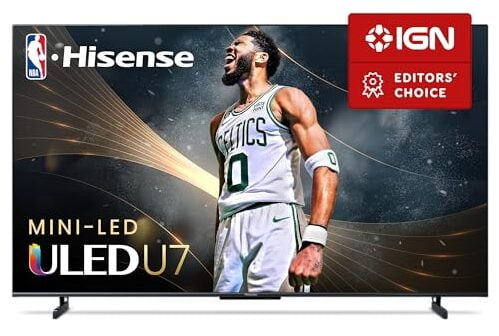
True Score
82859Experts
87777Customers
Absolutely Fresh
 SAVE $40$799.99$759.99
SAVE $40$799.99$759.99Read More
Snapshot
Reasons to Buy
- Outstanding picture quality in the dark
- High peak brightness
- Fast response time and low input lag
- 120 Hz refresh rate
Reasons to Avoid
- Subpar off-center viewing
- Average blooming
Specifications
Max Resolution 3840 x 2160 (4k) 
Backlight Type Full-Array Refresh Rate 120 Hz Display Type LED HDMI Inputs 4 
HDMI Type 2.0, HDMI 2.1 HDR Format Dolby Vision, HDR10, HDR10+, HLG 
HomeKit Compatible – 
Number of Audio Channels 2.1 
Panel Type IPS Screen size 55", 65", 75" 
Smart Platform Google TV 
Speaker Output 40 Watts 
Sync Technology HDR Format 
VRR Yes All Specs
Test Results
SDR Brightness (nits) 603 HDR Brightness (nits) 786.5 Color Gamut % (DCI P3 xy) 96.31 Response Time (ms) 11.3 Contrast Ratio (x:1) 45,000 EOTF (600 nit delta) 0.0211 Color Gamut % (DCI P3 uv) 97.4 Color Gamut % (Rec 2020 xy) 76.18 Color Gamut % (Rec 2020 uv) 81.91 Color Gamut % (sRGB) 98.5 Color Gamut % (Rec 709) 0 Color Gamut % (BT.2020) 76 Color Gamut % (Adobe RGB) 80.5 Color Gamut % (BT.709) 0 Input Lag (ms) 14.3 Color Washout (Degrees) 23 Color Shift (Degrees) 23 Brightness Loss (Degrees) 35 Reflections (%) 1.9 Low-Freq Extension (Hz) 89.8 Freq Response StdDev @ 70db 4.36 Freq Response StdDev @ 80db 4.48 Weighted Total Harmonic Distortion @80db 0.096 Intermodulation Distortion @80db 4.47 EOTF (1000 nit delta) 0.021 EOTF (4000 nit delta) 0.013 All Tests
All Retailers
- $759.99$800Save $40
Availability
In StockFree Shipping
No - $800.00
Availability
In StockFree Shipping
No - $1,008.32
Availability
In StockFree Shipping
No
Our Verdict
If value is what you want more than anything else, the Hisense U7K is exactly the TV you’re looking for, the U7K is one of the Best Value TVs on our list. It delivers vibrant visuals with a color accuracy of 96.31% (DCI P3 xy), ensuring a rich and immersive viewing experience. With an SDR brightness of 603.0 nits and an HDR peak of 786.5 nits, the U7K performs well in dim and moderately lit rooms, making it ideal for dimmer home theaters or game rooms, but it’s also less than ideal for bright rooms. If you need bright room performance, its brother (the U8K) or the TCL QM8 may be more your speed.
The TV caters decently well to gamers and sports enthusiasts with a response time of 11.3ms and an input lag of 14.3ms. It’s not the fastest on the list, but it’s more than enough for casual gaming and enjoying live sports without noticeable delay or blur, ensuring actions on screen are timely and fluid. If you’re looking for an inexpensive TV that can launch from streaming content right into playing games or watching one, the U7K can manage just fine – especially at this price point.
If streaming movies is something you do often, the EOTF value of 0.0211 isn’t amazing. More accurate options exist on the list, including the U7K’s big brother (the U8K) but the U7K is over two hundred dollars cheaper. And when compared to the Sony A95L, the U7K is nearly five times cheaper.
Overall, the Hisense U7K Android TV is a budget oriented choice that doesn’t sacrifice too much performance to get there. It doesn’t earn a first-place finish in any tested metric, but it’s never that far off. It’s a good performer across a variety of content, and if you’re looking for an Android TV that can handle very well (even if it never stands out) then it’s a solid choice.
Read Less

DON’T SEE WHAT YOU’RE LOOKING FOR?
Be sure to also read our guide to the best TV brands. When searching for your new TV, whether it’s the best Hisense TV or a top LG TV, it’s important to compare these aspects to ensure your chosen model meets your expectations for clarity, color vibrancy, and overall viewing experience.
If you’re looking for versatility, our guide to the best TV monitors can help you find a model that fits both work and play. Additionally, we have guides to the best gaming TVs, or the best TV for sports. To get a more immersive audio experience, learning how to connect a soundbar to your TV can greatly increase your TV watching or gaming enjoyment.

Best Overall

Runner Up

Best Value

Best Budget

Best Mid-Range

Premium Pick
Hisense U8K TV
Best For Bright Room
Bright, colorful, and great for varied content, the U8K combines high brightness and solid gaming performance, making it a versatile choice for any Android TV user.
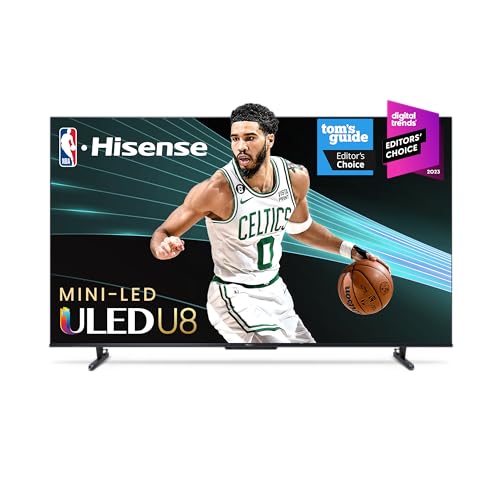
True Score
79806Experts
841kCustomers
Mixed Reviews
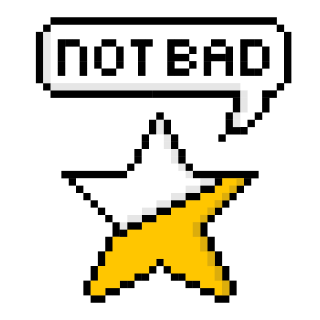 SAVE $150$999.99$849.99
SAVE $150$999.99$849.99Read More
Snapshot
Reasons to Buy
- Good picture quality
- Outstanding brightness and good contrast ratio
- Quick response time
- Great reflection handling
Reasons to Avoid
- Poor viewing angles
Specifications
Max Resolution 3840 x 2160 (4k) 
Backlight Type Full-Array Refresh Rate 144 Hz 
Depth 3" Display Type LED HDMI Inputs (Total) 4 
HDMI Type HDMI 2.1 HDR Format Dolby Vision, HDR10, HDR10+, HLG 
Height 33.1" High Dynamic Range (HDR) Yes 
Number of Audio Channels 2.1.2 
Panel Type VA Screen size 100", 55", 65", 75", 85" 
Smart Platform Google TV 
Speaker Output 50 Watts 
Voice Assistant Google Assistant 
Weight 56.4" lbs 
Width 57.2" 
Works With Google Assistant All Specs
Test Results
SDR Brightness (nits) 1,549 HDR Brightness (nits) 1,792 Color Gamut % (DCI P3 xy) 97.44 Response Time (ms) 13.3 Contrast Ratio (x:1) 165,360 EOTF (600 nit delta) 0.0105 Color Gamut % (DCI P3 uv) 97.01 Color Gamut % (Rec 2020 xy) 76.18 Color Gamut % (Rec 2020 uv) 81.82 Color Gamut % (sRGB) 0 Color Gamut % (Rec 709) 0 Color Gamut % (BT.2020) 80 Color Gamut % (Adobe RGB) 0 Color Gamut % (BT.709) 0 Input Lag (ms) 14.2 Color Washout (Degrees) 23 Color Shift (Degrees) 23 Brightness Loss (Degrees) 35 Reflections (%) 1.8 Low-Freq Extension (Hz) 80 Freq Response StdDev @ 70db 2.06 Freq Response StdDev @ 80db 2.11 Weighted Total Harmonic Distortion @80db 0.1 Intermodulation Distortion @80db 0.71 EOTF (1000 nit delta) 0.0106 EOTF (4000 nit delta) 0.011 All Tests
All Retailers
- $849.99$1,000Save $150
Availability
In StockFree Shipping
No - $997.99
Availability
In StockFree Shipping
No - $1,450.40
Availability
In StockFree Shipping
No
Our Verdict
The Hisense U8K TV is a strong contender in our Android TV selection, offering impressive specs that cater to a wide audience. It brings colors to life with a 97.44% (DCI P3 xy) color accuracy and balances brightness well, featuring an SDR brightness of 1549.0 nits and an HDR peak of 1792.0 nits. This means whether you’re watching in daylight or a dim room, the picture quality stays crisp and vivid.
If you need a good bright room TV, the U8K stands out for its combination of high brightness and good contrast. While not an OLED, the U8K still delivers on deep blacks and a high contrast ratio (over 165,000), essential for enjoying dynamic HDR content. Its EOTF performance is the best among the non-OLEDs on our list, coming in at 0.0105, making for good gamma tracking that helps render home theater content more closely to how it was intended.
Gamers and sports fans may be a little let down by the U8K’s response time of 13.3ms and an input lag of 14.2ms. They won’t cause problems, but there are TVs with faster response times and better input lag on the list. Still, if you’re looking for a good TV to watch sports on in addition to streaming content and movies, or you want to be able to flip from Netflix to casual gaming, the U8K won’t disappoint you.
Despite its strong brightness and color performance, the Hisense U8K also manages reflections well, with only 1.8% of light reflected, making it a great choice for bright rooms. By minimizing the glare that screens might normally suffer from in more brightly lit spaces, the U8K is a solid choice for those with brightly lit living spaces or for setups where controlling ambient light isn’t always possible.
All in all, the Hisense U8K TV offers a fantastic mix of high brightness, color fidelity, and responsive performance, making it a great Android TV option for anyone looking to upgrade their viewing or gaming setup. Its strengths make it suited for a variety of content, from the latest streaming services to fast-paced games and live sports, ensuring a quality experience for all types of entertainment.
Read Less

Our Approach to Testing Android TVs
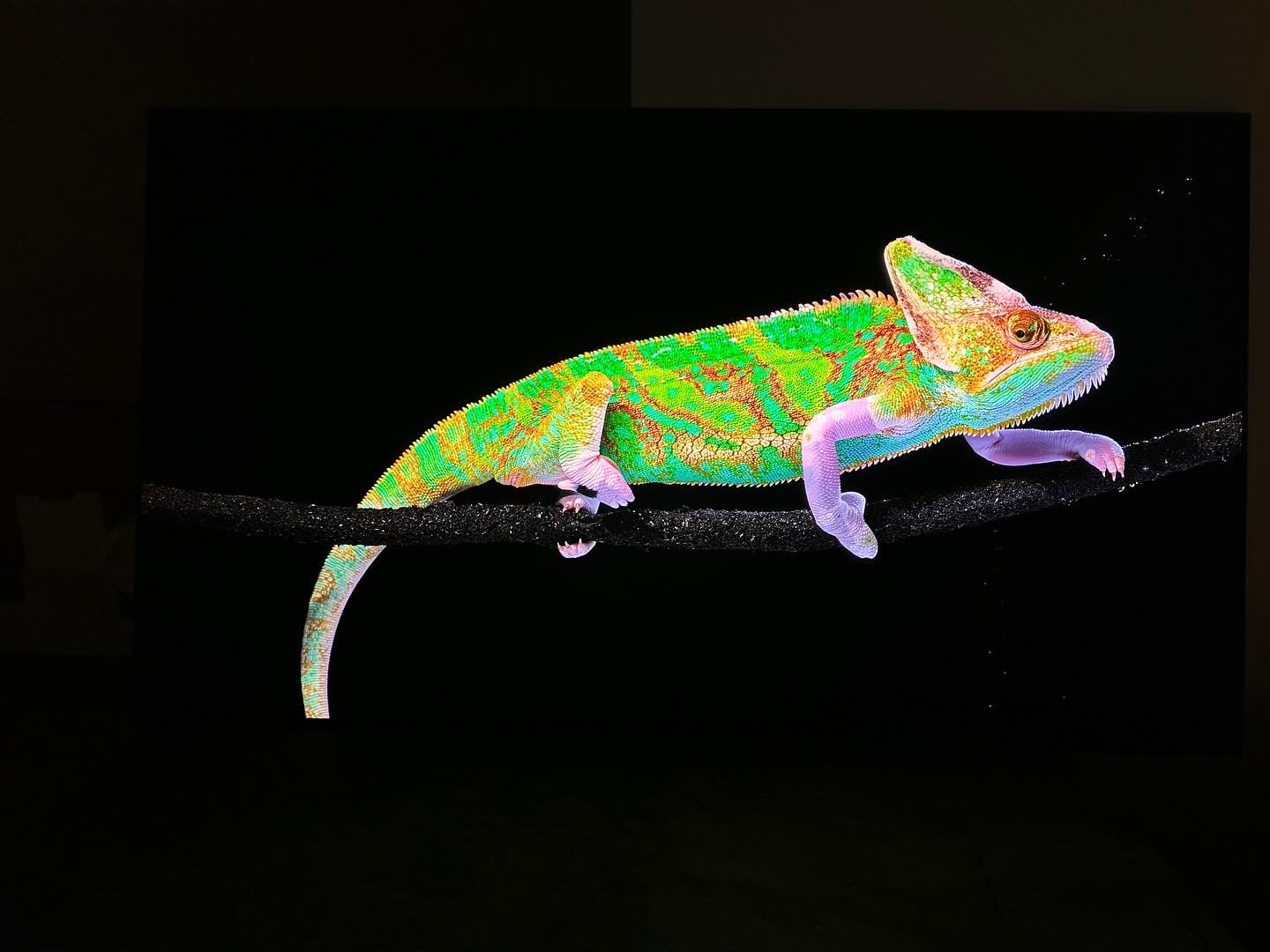
Evan Shepard/Gadget Review
We’ve redefined TV buying guides, setting us apart from any other site on the planet. Our unique approach combines in-house verification with a comprehensive dataset from trusted sites, focusing on key testing metrics like brightness (SDR and HDR), EOTF, response time, contrast ratio and color gamut.
Seeking the best Android TVs? Look for smooth Google/Android OS integration and top performance. Choose a TV praised for 4K resolution, HDR support, and plenty of apps to ensure both quality and ease of use. Need help narrowing down features? Let me know!
You may notice some of our graphs contain “Source: RTings”. This is to indicate that the data we’re showing off in a graph has come from a single source – because it’s the only source that actually tested the criteria and had data for it! Normally, our data is an average out of all of the various publications that test and provide data to give you a good idea of how a product is going to perform on average.
Which Criteria Matters for Testing Android TVs?
By focusing on these criteria (3 required, 3 nice to have), anyone can quickly and easily compare these TVs and how they’ll perform. This helps you make an informed decision and purchase a TV that will fit into your space.
| CRITERIA | RANGE | REQUIRED | DEFINITION |
|---|---|---|---|
| SDR Brightness | 300+ nits | Yes | Assess the luminance of your display when operating in Standard Dynamic Range (SDR) mode. |
| HDR Brightness | 1000+ nits | Yes | Determine the luminance of your display in High Dynamic Range (HDR) mode. |
| Color Gamut (DCI P3 xy) | >= 90% | Yes | Evaluate the extent to which a TV can reproduce a specified spectrum of colors. |
| EOTF | 0.018 | No (nice to have) | Standard that governs how a display interprets and renders brightness and color. |
| Response Time | <=10ms | No (nice to have) | Time required for a pixel to transition from one color to another and then return to its original color. |
| Contrast Ratio | >= 10,000 | No (nice to have) | The ratio between the brightest white and darkest black that the screen can display. |
Our Trusted Data Sources
(Publication category Score is 80%+)
We looked at 210+ TV reviewers and while 24 are trustworthy (60%+ Trust Rating), we only use data from the testers that are “very trusted” which means a Trust Rating above 70%. The three we have listed below are our most trusted for TVs, along with our own in-house TV expert.
- Evan Shepard – Gadget Review
- Matthew Lopes – RTings, MuckRack
- Will Greenwald – PCMag, MuckRack, Twitter
- David Katzmaier – CNET, MuckRack, Twitter
Interested in a comprehensive analysis of our data sources? We’ve got you covered. Below, you’ll find a detailed list of every TV review website we’ve identified, organized by their respective Trust Ratings from highest to lowest. But we didn’t stop there. We’ve meticulously reviewed each publication and verified the data by checking whether the authors have bio links to MuckRack or LinkedIn. We’re committed to not only checking the facts but ensuring their veracity.
Best Android TVs Test Data & Results
1. SDR & HDR Brightness TV Test Results
In well-lit rooms, the brightness level of your Android TV, quantified in nits, is key to a great viewing experience. A TV that doesn’t meet the brightness requirement will struggle against natural and artificial light, resulting in a dim, lackluster image. Essentially, nits measure how well your TV can stand up to light interference, with higher values ensuring a sharper, more vivid display.
For standard viewing on the best Android TV, you should look for at least 300 nits to strike the right balance between clarity and color quality in standard dynamic range (SDR) content. For high dynamic range (HDR) content, which offers richer colors and greater contrast, a minimum of 1000 nits is ideal to truly appreciate the enhanced visuals. These brightness levels are recommended to ensure your TV performs well in bright settings, allowing you to enjoy your shows and movies without any loss in detail or quality. Aim for these minimums: SDR Brightness >= 300 nits; HDR Brightness >= 1000 nits for the optimal experience.
Discover the top Android TVs, ranked from brightest to least.
Brightness
SDR: 300+ nits
HDR: 1000+ nits
Acceptable range of performance
Definition: Maximum brightness in a specified pattern size window. Most commonly measured in a 10% or 100% white window.
Units of Measurement: nits (alternatively cd/m²)
Tools to Measure: TV, luminance meter
Why It’s Important:
Brightness helps counter ambient light so that details and colors don’t wash out and get lost.
SDR Brightness (in nits, higher is better)
HDR Brightness (in nits, higher is better)
2. Color Gamut (DCI P3 xy) TV Test Results
Color Gamut
>= 90%
Acceptable range of performance
Definition: The TV’s capability to display a spectrum of colors.
Units of Measurement: % (color space coverage in percent)
Tools to Measure: Colorimeter
Why It’s Important:
Inaccurate colors compromise the authenticity of the content.

Color gamut defines the range of colors an Android TV can reproduce, directly affecting how vibrant and true-to-life the images look. A wide color gamut in a TV brings out richer, more vivid colors – from the lush greens of a garden to the bright colors of animated characters, enhancing your viewing experience to closely mimic real life.
This concept is technically measured against standards like the DCI P3 xy, a benchmark for high-quality visuals. An Android TV covering a higher percentage of this color space can display colors more accurately and vividly.
For those who prioritize vibrant and immersive, aiming for an Android TV with a color gamut of 90% or higher on the DCI P3 xy scale is ideal. This ensures that the content you watch is as vibrant and lifelike as possible.
Below are the top Android TVs, ordered by color gamut, all exceeding our testing criteria.
DCI P3 XY Color Gamut (as a %; high is better)
3. EOTF Test Results
The Electro-Optical Transfer Function (EOTF) plays a critical role in ensuring the content on your TV looks exactly as the creator intended. This technical feature adjusts your screen’s brightness levels, ensuring every scene, from the darkest shadows to the brightest highlights, is displayed with true-to-life accuracy.
In rooms flooded with light, a TV that nails EOTF calibration shines by preserving the intended contrast and detail in the picture despite the challenging conditions. It balances the brightness so that images remain vibrant and full of detail, unaffected by the glare of ambient light.
A TV that excels in managing EOTF offers an immersive and authentic viewing experience. It brings creators’ visions to life, accurately rendering every scene with the proper light and dark levels, no matter the lighting in your room. This means you get a consistent, realistic picture that captures the full spectrum of colors and contrasts, from the subtlest hues to the most intense explosions.
Below are all the Android TVs on our list, ordered by EOTF, from best to worst.
EOTF
< 0.018 (600 nit Δ)
Acceptable range of performance
Definition: How your TV interprets and renders the luminance data from content and translates it to be represented on screen. If EOTF/Gamma tracking is too low or too high, it will result in an over-brightened or over-darkened image from reference.
Units of Measurement: this test measures for the delta from the standard
Tools to Measure: Luminance colorimeter
Why It’s Important:
EOTF ensures that the game is displayed (color and HDR brightness) as the creator intended it
EOTF (source: rtings.com – 0 = no data exists; lower is better)
4. Response Time TV Test Results
Response Time
1ms-10ms
Acceptable range of performance
Definition: Speed at which a pixel transitions from one color to another
Units of Measurement: milliseconds (ms)
Tools to Measure: Screen, camera, test software
Why It’s Important:
A faster response time means less blur and thus more accuracy
A slow response time on a Android TV during fast-paced scenes is like trying to watch a thrilling movie with a foggy lens. Imagine settling in for an action-packed sequence, only to have the swift movements turn into a blur, robbing you of the crisp, clear detail you crave. This isn’t just a minor annoyance; it’s a major detriment to your viewing experience, leaving you with a picture marred by motion blur and visual artifacts.
So, what exactly is response time? It measures how quickly a pixel on your TV can change from one color to another. In the context of watching fast-moving content or enjoying dynamic scenes on a Android TV, a low response time is crucial. A response time of 15 ms or lower is good, but if you plan on gaming on this set, aim for a response time of 10 ms or lower. At these levels, your Android TV ensures smooth transitions and sharp visuals, making every scene come to life without any distracting blurs or delays.
Below are the top Android TVs, ordered by response time.
Response Time (in milliseconds; lower is better)
5. Contrast Ratio Test Results
For Android TV enthusiasts, a solid contrast ratio is crucial for enjoying your favorite TV shows or movies, especially in darker settings. This feature directly impacts how lifelike and dynamic the picture appears on your screen, ensuring that dark scenes are displayed with clear, crisp blacks instead of murky grays and bright scenes retain their detail without appearing washed out.
Put simply, the contrast ratio is all about the range of luminance a TV can produce, from the deepest blacks to the brightest whites. It’s what brings depth to the image, enhancing the realism of every scene. Watching a movie in the dark, for example, the difference between a TV with a poor contrast ratio and one with a high ratio is stark: the former struggles, blending shadows into a flat gray, while the latter delivers true black, making night scenes more immersive and detailed.
Ideally, a contrast ratio of 10,000:1 is what you should aim for in an Android TV. This level of luminance variance ensures that you’re getting a picture quality that can handle the nuances of lighting in any scene, providing a viewing experience that’s both rich and engaging. Note: OLED TVs have infinite contrast ratio, indicated by “0.”
Below are the top Android TVs, ordered by contrast ratio, all exceeding our testing criteria.
Contrast Ratio
>=10,000:1
Acceptable range of performance
Definition: Difference between the darkest black and the brightest white a screen can display.
Units of Measurement: cd/m2
Tools to Measure: Luminance meter
Why It’s Important:
A higher contrast ratio delivers deeper blacks, enhancing content definition, especially in darker rooms.
Contrast Ratio (higher is better)
Android TVs: Mistakes To Avoid
- Ignoring Size and Space: Not considering the available space or room layout can lead to purchasing a TV that’s either too large or too small for the intended area. For instance, if you’re looking for the best 80-inch TV, ensure your room is large enough to accommodate its size for an optimal viewing experience.
- Overlooking Compatibility: Failing to check compatibility with existing devices or home networks may result in issues connecting and accessing content seamlessly. This is particularly important when adding a dumb TV to your setup, as it lacks the smart features that facilitate easy integration with modern devices.
- Neglecting Display Quality: Choosing solely based on features or price without considering factors like resolution, HDR support, and color accuracy can lead to dissatisfaction with picture quality. To ensure superior picture quality, check out our selection of the best OLED TVs which provide a vibrant viewing experience. Furthermore, explore our guide on the best 8K TVs, which offer unprecedented detail and clarity. It’s also important to weigh the benefits and differences between 4K vs 8K to make an informed decision that suits your viewing preferences and future-proofs your investment.
- Disregarding Smart Features: Not researching the capabilities of the TV’s smart platform, including app availability, ease of use, and software updates, may result in missing out on desired functionalities. Understanding what a smart TV is can help you appreciate the value these features add, especially if you’re in the market for the best 65-inch TV, where smart functionalities are almost expected.
The Best Android TVs Tests Compared
Product |
True Score
|
SDR Brightness
|
HDR Barightness
|
Color Gamut
|
EOTF
|
Response Time
|
Contrast Ratio
| |
|---|---|---|---|---|---|---|---|---|
| 89 |
|
|
|
|
|
| $1,979.00 $3,578 $1,599 |
| 83 |
|
|
|
|
|
| $949.99 $1,000 $50 |
| 82 |
|
|
|
|
|
| $759.99 $800 $40 |
| 79 |
|
|
|
|
|
| $849.99 $1,000 $150 |











